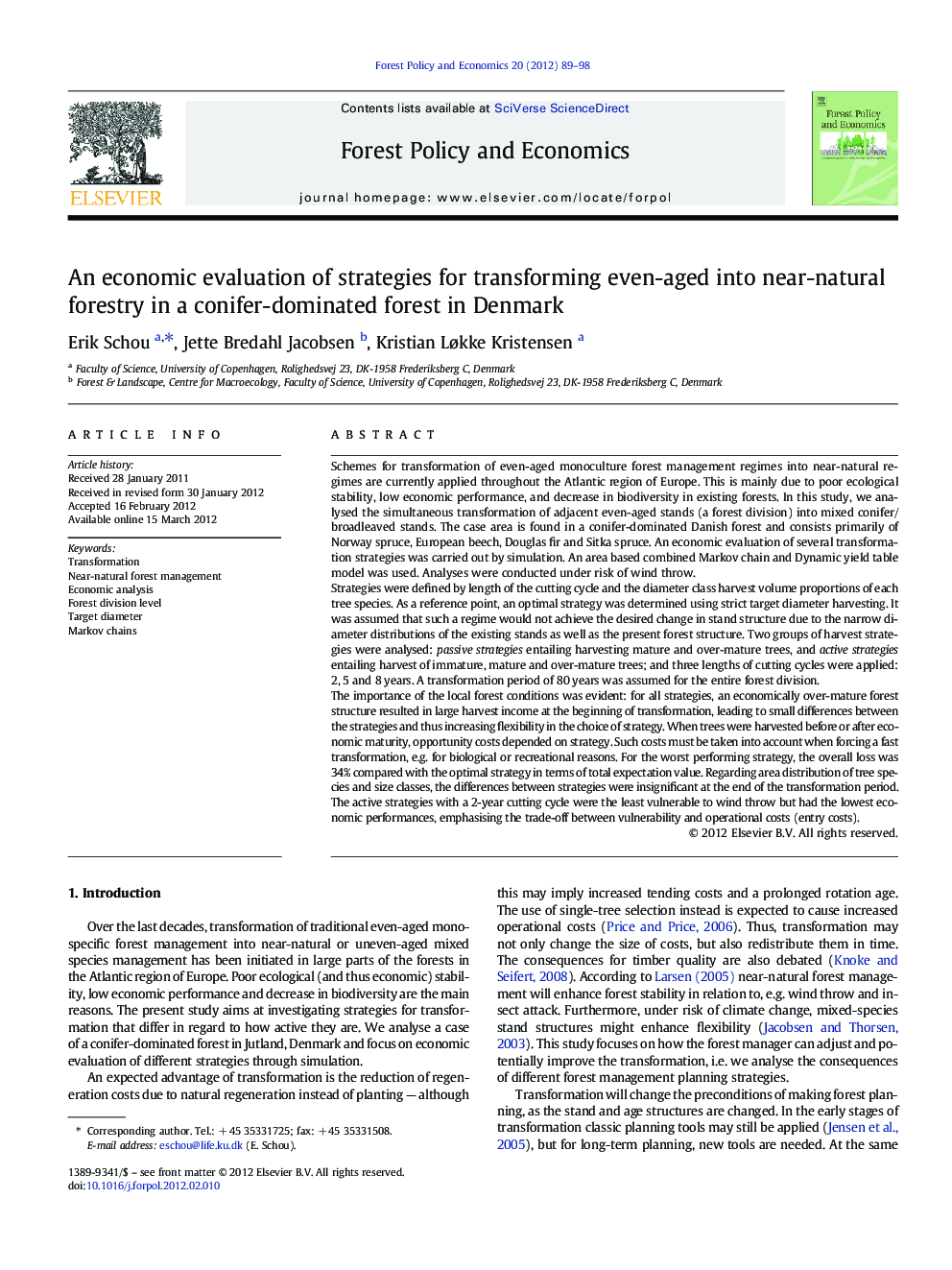| کد مقاله | کد نشریه | سال انتشار | مقاله انگلیسی | نسخه تمام متن |
|---|---|---|---|---|
| 91132 | 159746 | 2012 | 10 صفحه PDF | دانلود رایگان |

Schemes for transformation of even-aged monoculture forest management regimes into near-natural regimes are currently applied throughout the Atlantic region of Europe. This is mainly due to poor ecological stability, low economic performance, and decrease in biodiversity in existing forests. In this study, we analysed the simultaneous transformation of adjacent even-aged stands (a forest division) into mixed conifer/broadleaved stands. The case area is found in a conifer-dominated Danish forest and consists primarily of Norway spruce, European beech, Douglas fir and Sitka spruce. An economic evaluation of several transformation strategies was carried out by simulation. An area based combined Markov chain and Dynamic yield table model was used. Analyses were conducted under risk of wind throw.Strategies were defined by length of the cutting cycle and the diameter class harvest volume proportions of each tree species. As a reference point, an optimal strategy was determined using strict target diameter harvesting. It was assumed that such a regime would not achieve the desired change in stand structure due to the narrow diameter distributions of the existing stands as well as the present forest structure. Two groups of harvest strategies were analysed: passive strategies entailing harvesting mature and over-mature trees, and active strategies entailing harvest of immature, mature and over-mature trees; and three lengths of cutting cycles were applied: 2, 5 and 8 years. A transformation period of 80 years was assumed for the entire forest division.The importance of the local forest conditions was evident: for all strategies, an economically over-mature forest structure resulted in large harvest income at the beginning of transformation, leading to small differences between the strategies and thus increasing flexibility in the choice of strategy. When trees were harvested before or after economic maturity, opportunity costs depended on strategy. Such costs must be taken into account when forcing a fast transformation, e.g. for biological or recreational reasons. For the worst performing strategy, the overall loss was 34% compared with the optimal strategy in terms of total expectation value. Regarding area distribution of tree species and size classes, the differences between strategies were insignificant at the end of the transformation period. The active strategies with a 2-year cutting cycle were the least vulnerable to wind throw but had the lowest economic performances, emphasising the trade-off between vulnerability and operational costs (entry costs).
► Deviation from optimal target diameter can reduce total expectation value up to 34%.
► Deviation from optimal target diameter can reduce average annual net income up to 40%.
► There is a trade-off between vulnerability to wind throw and operational costs when making the choice of cutting cycle.
► Initial forest structure may have major influence on the importance of harvest strategy.
► The choice of transformation strategy affects vulnerability to wind throw.
Journal: Forest Policy and Economics - Volume 20, July 2012, Pages 89–98